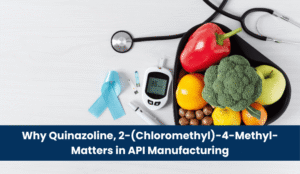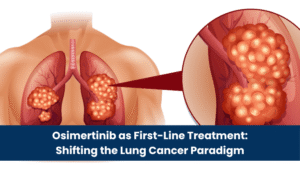Cancer diagnosis brings a lot of complexities to treatment options. All this is exhausting, right? Among those interventions that have aroused a lot of attention is combining Veliparib with conventional chemotherapy. However, why should they be combined, and what will it mean to the patients? To simplify this, and put it in compassionate terms, let’s examine how this collaboration would treat cancer more effectively and also focus on patient safety by ensuring the quality of ingredients in pharmaceuticals.
Why Combine Veliparib with Chemotherapy?
Chemotherapy has been a foundation of cancer treatment, but researchers constantly seek ways to enhance its effectiveness. Enter Veliparib—a targeted therapy designed to work with chemo, not replace it. The Veliparib chemotherapy combination employs a more effective attack strategy. Chemotherapy delivers the initial blow to cancer cells, while Veliparib sabotages their repair mechanisms. This dual approach is particularly valuable for aggressive cancers where single therapies show limitations.
The synergy isn’t accidental; it’s grounded in cancer biology. Tumours evolve to resist treatments, but combining agents with complementary actions makes resistance more challenging. For patients, this could mean better outcomes without dramatically increasing side effects—a balance worth pursuing.
What Is Veliparib and How Does It Work?
Veliparib belongs to the class of PARP inhibitors. PARP enzymes act as cellular “first responders,” patching up DNA damage in both healthy and cancerous cells. Veliparib blocks these enzymes, preventing cancer cells from repairing the DNA breaks caused by chemotherapy. Think of it as trapping cancer in a damaged state until it self-destructs.
The efficacy hinges on the quality of the Veliparib API (Active Pharmaceutical Ingredient). As the core therapeutic component, impurities or instability could impact patient safety. This is where specialised pharmaceutical ingredients manufacturers make a difference. Companies like Bulat Pharmaceutical ensure high-purity Veliparib API through stringent api manufacturing protocols. After all, the api raw material determines the therapy’s reliability—non-negotiable in oncology.
The Science Behind the Combination Approach
Why does pairing Veliparib with chemo work so effectively? Chemotherapy damages DNA in rapidly dividing cells. Cancer counters by activating PARP-driven repair pathways. Veliparib cancer treatment disrupts this survival tactic:
- Chemotherapy creates DNA strand breaks
- Veliparib blocks PARP enzymes from fixing breaks
- Cancer cells accumulate irreparable damage and die
This Veliparib chemotherapy combination exploits a vulnerability called “synthetic lethality.” Healthy cells (with intact DNA repair backups) withstand this attack better than cancer cells. It’s a precision strategy—maximising tumour destruction while minimising damage to normal tissue.
Common Chemotherapy Agents Used with Veliparib
Not all chemo drugs pair equally well with Veliparib. The most effective combinations leverage agents causing specific DNA damage. Consider these synergies:
| Chemotherapy Class | Mechanism | Veliparib’s Role |
| Platinum-based Agents | Create DNA cross-links | Blocks repair pathways, amplifying cell death |
| Alkylating Agents | Introduce DNA strand breaks | Prevents repair, enhancing tumour suppression |
| Topoisomerase Inhibitors | Stabilise DNA breaks during replication | Inhibits recovery, boosting chemo efficacy |
Potential Benefits of the Combination Therapy
What makes this approach promising? Beyond improved response rates, the Veliparib chemotherapy combination offers unique advantages:
| Benefit | Explanation |
| Enhanced Tumour Targeting | Exploits cancer’s repair dependency while sparing healthy cells better than chemo alone |
| Overcoming Resistance | Reduces cancer’s ability to evolve resistance compared to monotherapies |
| Personalized Potential | Especially effective for cancers with DNA-repair deficiencies (e.g., BRCA mutations) |
Key advantages of Veliparib-chemotherapy pairing
The Veliparib cancer treatment approach relies on pharmaceutical-grade ingredients. Trusted active pharmaceutical ingredient manufacturers adhere to rigorous standards of purity and quality. As leading active pharmaceutical ingredient companies emphasise, consistent api manufacturing processes directly impact therapeutic outcomes. Sourcing from reputable API manufacturer partners ensures that the API raw material meets global quality benchmarks—a commitment upheld by Bulat Pharmaceutical in the production of Veliparib API.
Navigating Treatment Considerations
While promising, the Veliparib chemotherapy combination requires careful management:
Side Effect Profiles
When considering the Veliparib chemotherapy combination, it’s vital to discuss potential side effects. PARP inhibitors like Veliparib may cause fatigue, nausea, or blood-related issues (like anaemia). These are closely monitored through regular blood tests. While manageable, open communication with your oncology team ensures timely interventions and effective treatment. Remember, side effects vary from person to person—proactive tracking helps balance efficacy with quality of life.
Patient Selection
Not all patients automatically qualify for Veliparib cancer treatment. Genetic testing (e.g., BRCA mutations) helps identify people who are most likely to benefit from treatment. Tumours with DNA repair deficiencies respond best to this Veliparib chemotherapy combination. Your oncologist will evaluate biomarkers, overall health, and the stage of the cancer to determine if this targeted approach aligns with your unique biology and treatment goals.
Treatment Sequencing
When to use Veliparib matters as much as how. Oncologists personalise sequencing—sometimes pairing it concurrently with chemo to maximise DNA damage, or using it post-chemo as “maintenance therapy” to suppress recurrence. This decision depends on the type of cancer, the patient’s treatment history, and their ability to tolerate treatment. The right sequence optimises the Veliparib chemotherapy combination’s impact while minimising risks.
Quality assurance remains critical. Variations in api raw material can affect drug performance. Hence, partnering with certified pharmaceutical ingredients manufacturers ensures batch-to-batch consistency in Veliparib API.
Looking Ahead: The Promise of Veliparib-Based Therapies
Combining Veliparib with chemotherapy represents a significant evolution in oncology. By turning cancer’s survival mechanisms against itself, this approach offers hope where traditional therapies plateau. Research continues to refine protocols, exploring new cancer types and optimised dosing schedules.
For healthcare providers, the foundation of effective treatment lies in the quality of the Veliparib API. This underscores the vital role of active pharmaceutical ingredient companies committed to excellence in api manufacturing. Manufacturers like Bulat Pharmaceutical, which prioritise precision and purity, ensure that therapies perform as designed.
As science advances, partnerships between clinical innovation and trusted API manufacturing expertise will continue to unlock better outcomes. For patients, this means therapies that fight smarter—not just harder—against cancer’s complexities.






